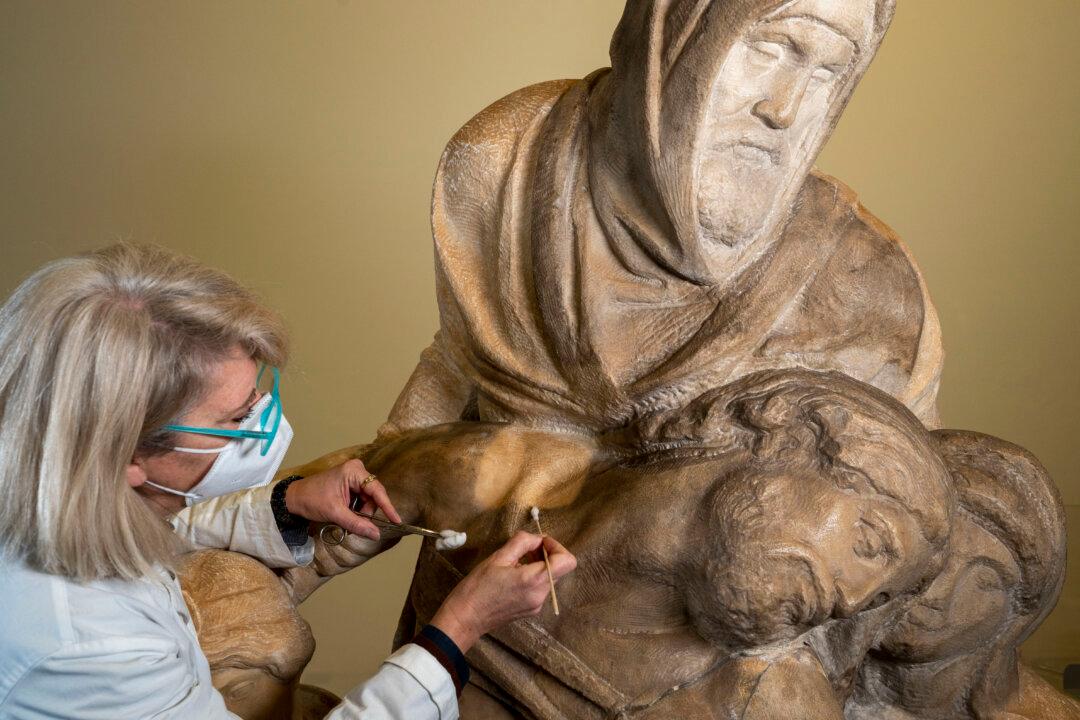It’s the middle of the 16th century. Sparks fly every which way as Michelangelo, at around 75 years old, furiously carves Christ, Nicodemus, the Virgin Mary, and St. Mary Magdalene into a piece of marble over 7 feet tall.
Michelangelo rendered Christ as he had just fallen from the cross. There’s a palpable dynamic energy to the piece titled “The Deposition” that makes one almost hold one’s breath as the three surrounding figures all attempt to steady Christ’s lifeless body. Nicodemus towers compassionately over the composition, trying to prop up Christ while seemingly allowing the Virgin Mary to bid her son farewell. Christ’s right arm wraps around a rather diminutive St. Mary Magdalene.






